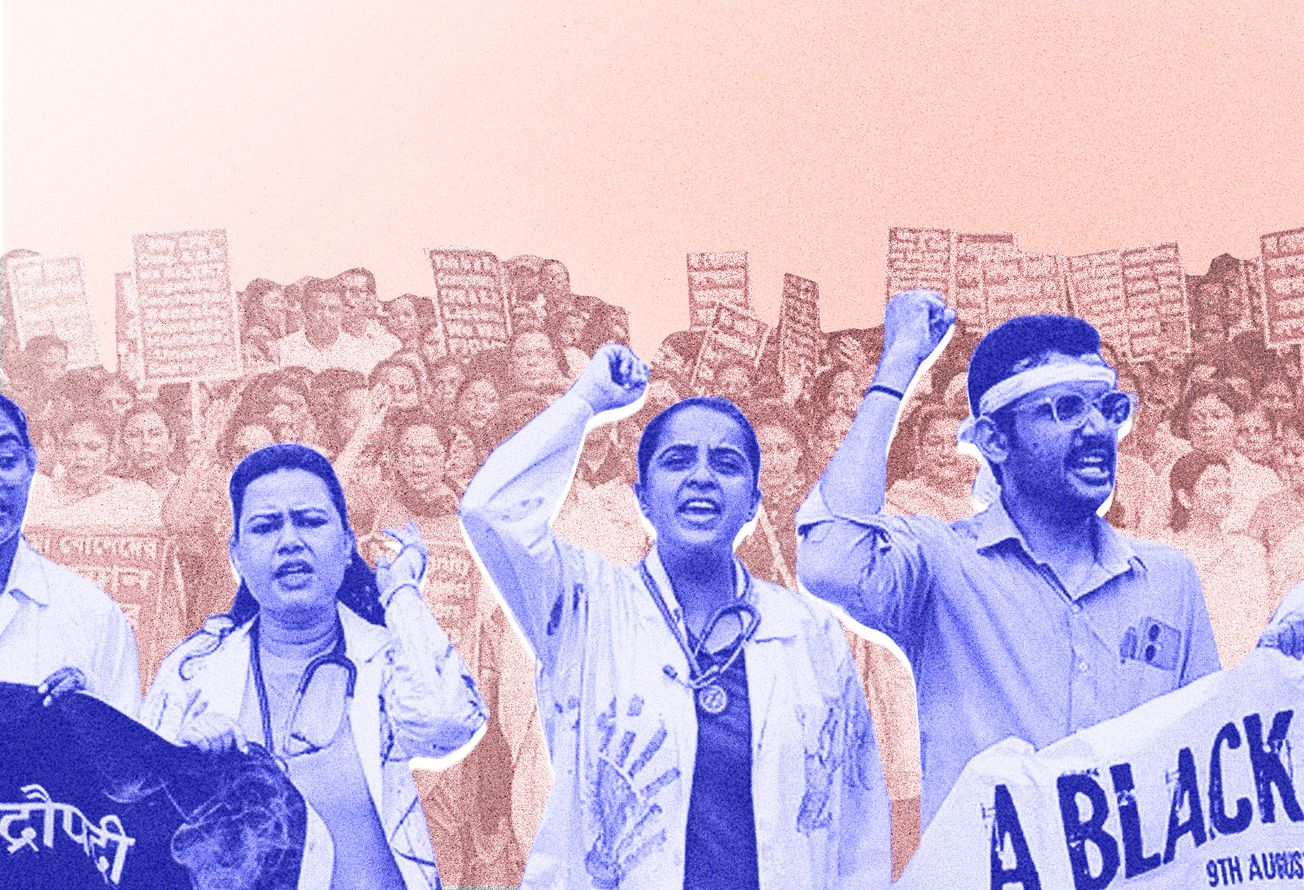Moved by the plight of the Hijra community, in 2014, the Supreme Court of India recognised their rights and brought them within the framework of the Indian Constitution in NALSA v. Union of India judgement (NALSA). There were two important developments. Firstly, Hijras were brought within the protective framework of the Indian Constitution—this meant they were now eligible for benefits and entitlements in the form of reservations for jobs and education. Secondly, and perhaps more importantly, the right to gender identity and self-identification were recognised within Indian jurisprudence. The NALSA judgement was rhapsodized for being “pathbreaking” as it aimed at remedying centuries of oppression for a people who were hitherto outside the ambit of law’s protection.
The court’s approval to the right to self-identification was meant to usher in an era of reforms to benefit all those who didn’t fit into the strict categories of the gender binary as either male or female. Unfortunately, the judgement was without complete delineation, i.e., it did not, in explicit terms, name specific groups (other than Hijras and transgender) which were to benefit from the court’s newly announced declaration of a right to gender identity. Intersex people, who require a different bouquet of rights and entitlements from those who identify as Hijra or transgender, were left behind by the judgement and its concomitant legislations and policies.
The NALSA judgement conflated multiple identities such as thjra, Kothis, Aravanis, Shiv Shaktis, third gender, and intersex under the umbrella term “transgender”. Although the Transgender Persons (Protection of Rights) Act (Transgender Act) and state-specific policies ensure at least a modicum of rights and entitlements for the Hijra community, the rights of intersex persons are grossly neglected. In fact, both the NALSA judgement and the Transgender Act exacerbate prejudices against the community.
By addressing the right to gender identity only in general terms, and by leaving its enforceability to the State, the NALSA judgement confuses the understanding of intersex identity. In this extract from the judgement, one can see how the court conflates the definitions of “intersex” with “eunuch”:
“Eunuch refers to an emasculated male and intersexed to a person whose genitals are ambiguously male-like at birth, but this is discovered the child previously assigned to the male sex, would be recategorised as intersexe[x]d —as a Hijra.”
This lack of understanding of the difference between trans and intersex forms the crux of the judicial fumbling. Intersex people have reproductive anatomy or genes that don’t fit typical definitions of male or female—this is often discovered at birth. Being transgender is about one’s internal knowledge of their gender identity. A trans person is usually born with a body and genes that are assigned male or female at birth, but they know their gender identity to be different. The failure to understand this creates a dangerous gap between the specific needs of the intersex community and legal interventions in addressing those needs.
The NALSA judgement omits the primary concern of the intersex community, which is the pathologisation of their bodies in childhood. In fact, apart from referring to legal protections offered to intersex persons in other countries, it doesn’t engage with the intersex question.
Even though it was considered progressive, the NALSA judgement made the common and legal understanding of intersex identity even more ambiguous than it already was. It brought no relief for people like M. Gangabhavanai, who, five years after the judgement, reported that she almost died because of the numerous surgeries she was forced to undergo to conform to a male body. Doctors refused to reverse the damage when she asked for medical help, claiming her body was “abnormal”.
The relentless pathologisation of intersex bodies often goes unseen and escapes legislative and judicial scrutiny. Since laws are premised on the gender binary and intersex people don’t fit the neat compartments of masculine and feminine, their bodies turn into sites of invasion. They are subjected to cosmetically “normalising” surgeries that aim at fitting them into the gender binary and getting them legal recognition. In India, such surgeries are influenced by parents’ preference for male babies. Although there is information available on issues of health, decisional autonomy, and medical processes for trans persons, medical pedagogy in India is silent on issues of differences of sexual development (DSD), which is more relevant for intersex persons. DSD is a group of rare conditions concerning genes, hormones, and reproductive organs and genitals, where a person's sex development differs from most other people’s. This lack of information means intersex people have no access to legal protection against forced surgeries that are medically unnecessary.
Since the NALSA judgement has been heralded for its progressive nature, subsequent cases have often relied on its precedential value and further muddled the case for intersex identity. In the Jackuline Mary case, (April, 2014), NALSA was narrowly interpreted by the Madras High Court to include only transgender persons and not transsexuals which includes intersex, transgender, and transvestite people. The court went as far as noting that NALSA was not concerned with the larger transsexual identity and only dealt with male-to-female cases.
In the case of Ganga Kumari (November, 2017), the Rajasthan High Court, on previous judicial misinformation, concluded that hermaphrodites are persons with sexual organs of both the feminine and masculine sexes and are commonly understood as transgender. Hermaphroditism is an intersex trait and not as such related to being transgender. A person identified as hermaphrodite may choose to identify with a gender that is disparate from the gender (or the lack of it) assigned at birth. A person is not transgender merely because they possess sexual organs that are not in tandem with the hegemonic understanding of gender.
In fact, it would seem that the Indian judiciary as a whole has misunderstood the term “transgender” and accordingly, any person with varying physical traits not fitting in the masculine-feminine binary is also considered as “transgender”. However, being intersex and identifying as transgender are not the same thing. There may be certain overlaps, e.g. an intersex person may choose not to identify with the gender assigned to them at birth but, by no means, are “intersex” and “transgender” synonymous.
In the case of Pinki Pramanik (September 2014), the Calcutta High Court found that a person with male pseudohermaphroditism was “incapable” of performing sexual activities like an adult male in the ordinary course of nature. This was premised on intersex individuals being unable to perform “ordinary” sexual intercourse. Not only does this further a patriarchal narrative of what sex ought to be, i.e, penetrative and for progeniture, it also egregiously assumes that intersex bodies are incapable of having sexual intercourse.
Another significant development that followed the NALSA judgement that could have been instrumental in providing succour for intersex persons was the adoption of the Transgender Persons (Protection of Rights) Act, 2019 (Transgender Act). Unfortunately, intersex persons are not mentioned in the Act beyond the definition section. The rest of the Act clubs intersex persons with trans people and fails to address surgical procedures and the specific discrimination intersex people face. In fact, the Transgender Act leaves them at the mercy of the general criminal law statutes (such as the Indian Penal Code, 1860) that fail to address the everyday violence of being intersex.
At the international level, only the Yogyakarta and the Yogyakarta Plus 10 address the right to bodily privacy and the right to make autonomous choices. Most other international instruments such as the Universal Declaration of Human Rights and the International Covenant on Civil and Political Rights only provide general guarantees of protection against discrimination, the right to privacy, and the right to live life with dignity.
There is stigma attached to simply “being” intersex. Continuing to live within an intersex body is perceived as being non-conformist and rebellious. No matter how progressive the NALSA judgement may have been, it was a lost opportunity to clearly define intersex identity and provide protection under law and medical practise.






